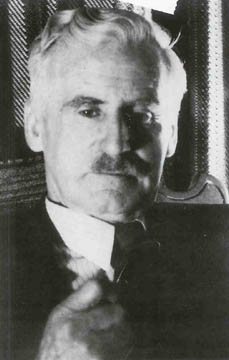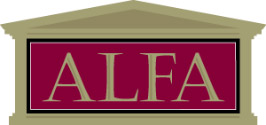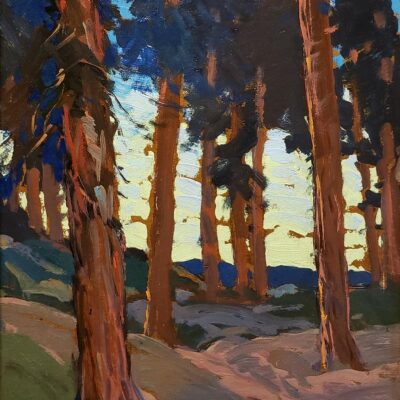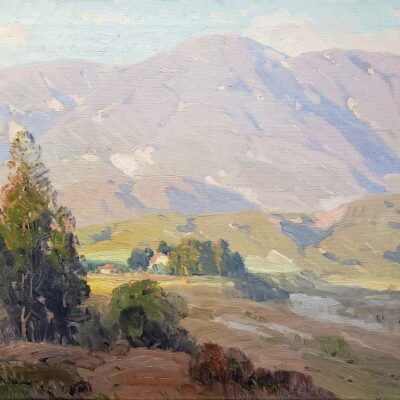Hanson Duvall Puthuff (1875-1972)
Biography

Hanson Duval Puthuff was born on August 21, 1875, in Waverly, Missouri, to Alonzo Augustus Duval and Mary Anne Lee. After his mother’s passing when he was two, his father, unable to care for him alone, entrusted him to Mary’s close friend, Elizabeth Stadley Puthuff, a young Civil War widow working as a seamstress. Elizabeth became Hanson’s surrogate mother, and he later adopted her surname. Although Puthuff was deeply attached to her, they were separated for eight years when, at age six, his father took him to live with various relatives in Kentucky and later with himself briefly in Oklahoma.
Puthuff began his art studies at the Chicago Academy of Fine Arts, established in 1879 and renamed the Art Institute of Chicago three years later. In 1889, he and his foster mother moved to Colorado, where he enrolled at the University of Denver, studying in the Fine Arts Department from 1890 to 1893 under Ida De Steiguer (active 1881–1907). Afterward, he and Elizabeth moved to Peoria, Illinois, where he launched his professional career, creating murals for the city hall and local churches. He later returned to Colorado, working for nine years as a sign painter for a Denver advertising firm.
In 1903, at age twenty-eight, Puthuff moved to Los Angeles to work as a commercial artist and billboard painter for the Wilshire Advertising Company, earning five dollars a day. In 1906, he returned briefly to Chicago, working alongside Victor Higgins (1884–1949) as a set painter at the Sasmun Studio. His commercial work spanned twenty-eight years, providing a steady income that enabled him to pursue his true passion—fine landscape painting. In 1904, Puthuff married Helen Marie Wren. The couple had a son named Wilfrid. The Puthuff’s lived in the Highland Park area of Los Angeles, a neighborhood that was an early hub for artists in Southern California and offered convenient access to the scenic landscapes that inspired his work. Highland Park’s proximity to the Arroyo Seco made it an ideal location for Puthuff and other plein air painters who were captivated by California’s natural beauty. His home and studio in this area allowed him to be part of a vibrant artistic community while staying connected to the landscapes he loved to paint. Helen was a supportive partner throughout her husband’s career.
Although skilled as a figure painter, Puthuff was captivated by California's untouched landscapes, inspiring him to shift his focus to the region’s scenic beauty. Living in Los Angeles, he joined the growing community of plein air artists and became a part of the California Impressionist movement. Hanson Duval Puthuff was a founding member of the California Art Club in 1909, a pivotal organization in promoting the plein air painting tradition and California’s burgeoning art scene. His involvement with the club not only solidified his place among the most respected artists of his time but also connected him with prominent peers, such as Guy Rose, William Wendt, and Jean Mannheim, who collectively shaped the California Impressionist movement. Puthuff frequently exhibited with the California Art Club, where his evocative landscapes received considerable acclaim, underscoring his impact on early 20th-century American art and his lasting influence on California’s artistic heritage.
Puthuff’s work stood out for its loose brushwork and high-key atmospheric light, evoking a strong sense of place. This mastery earned him several prominent public commissions, including his 1915 decorations for Homer Laughlin’s theater in Long Beach, where he collaborated with William Wendt (1865–1946) on murals portraying "The Spirit of California." In 1924, he was commissioned to paint backdrops for the first habitat dioramas at the Los Angeles Museum of History, Science, and Art. He continued painting backgrounds for Santa Fe Railroad model displays across the country until the 1940s and, in 1938, created panoramic scenery for the Theodore Roosevelt Memorial at the American Museum of Natural History in New York.
As a fine artist, Hanson Puthuff received numerous awards for his landscapes, including the Alaska–Yukon–Pacific Exposition in 1909, a bronze medal at the Paris Salon in 1914, and two silver medals from the Panama-California Exposition held in San Diego between January 1, 1915 and January 1, 1917.
Puthuff’s later paintings were mostly of the La Crescenta, La Canada, and Verdugo Hills area around his home, as well as the Eastern Sierra and Arizona deserts. In 1904 he was given his first solo exhibition, and by 1914 the first of several solo museum exhibitions of his work was held at the Los Angeles Museum of History, Science, and Art. He also exhibited throughout the country in national exhibitions. Puthuff was active in local art organizations, helping establish the Painter’s Club of Los Angeles, predecessor of the California Art Club, and the Art Students League of Los Angeles, which he co-founded with his friend Antony Anderson, the first art critic for the Los Angeles Times. Puthuff was also a founding member of the Laguna Beach Art Association, established in 1918, which played a vital role in supporting and promoting California plein air artists.
Hanson Puthuff’s paintings are held in esteemed collections, including those of the Los Angeles County Museum of Art, Laguna Art Museum, Bowers Museum, and the UCI Langson Irvine Museum of California Art. His exceptional diorama backgrounds are still prominently displayed at the Natural History Museum of Los Angeles County, and many of his works are cataloged in the Smithsonian American Art Museum’s inventory. In 2007, the Pasadena Museum of California Art honored his legacy with an exhibition, California Colors: Hanson Puthuff, and republished his autobiography alongside the show. Hanson Duval Puthuff passed away in Corona del Mar on May 12, 1972.
Elaine Adams
Director, American Legacy Fine Arts
Research Sources:
AskART.com; Michael David Zellman, 300 Years of American Art; Donald Hagerty, Canyon de Chelly; Wesley Jessup and Jean Stern, Hanson Puthuff, California Colors; Edan Hughes, Artists in California, 1786-1940; Fabricating Wilderness: The Habitat Dioramas of the Natural History Museum of Los Angeles County edited by Matt Davis; and Los Angeles County Museum of Art collections research.


